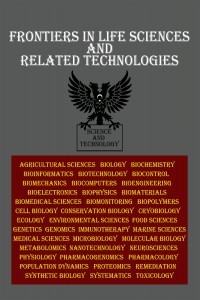Comparison of main metal industry sub-business lines from occupational health and safety perspective using CIRITIC and EDAS methods
Comparison of main metal industry sub-business lines from occupational health and safety perspective using CIRITIC and EDAS methods
Base metal industry, CRITIC, EDAS, occupational health and safety,
___
- Akcakanat, O., Aksoy, E., & Teker, T. (2018). CRITIC ve MDL Temelli edas yöntemi ile Tr-61 bölgesi bankalarının performans değerlendirmesi. Süleyman Demirel Üniversitesi Sosyal Bilimler Enstitüsü Dergisi, 1(32), 1-24.
- Alli, B. O. (2008). Fundamental principles of occupational health and safety Second edition. Geneva, International Labour Organization, 15, 2008.
- Alp, S., & Engin, T. (2011). Trafik kazalarının nedenleri ve sonuçları arasındaki ilişkinin TOPSİS ve AHP yöntemleri kullanılarak analizi ve değerlendirilmesi. İstanbul Ticaret Üniversitesi Fen Bilimleri Dergisi, 19, 65-87.
- Ayrim, Y., & Can, G.F. (2017). Risk değerlendirmesinde CRITIC metodu ile sektörlerin karşılaştırması. Journal of Turkish Operations Management, 1(1), 67-78.
- Bakirci, F., Shiraz, S. S., & Sattary, A. (2014). BIST’da demir, çelik metal ana sanayii sektöründe faaliyet gösteren işletmelerin finansal performans analizi: VZA süper etkinlik ve TOPSIS uygulaması. Ege Akademik Bakış Dergisi, 14(1), 19.
- Bulgurcu, B. (2019). Çok nitelikli fayda teorisi ile CRITIC yöntem entegrasyonu: Akıllı teknoloji tercih örneği. OPUS International Journal of Society Researches, 13(19), 1930-1957.
- Can, G. F., & Kargi, S. (2019). Sektörlerin iş sağlığı ve güvenliği yönünden risk seviyelerinin CRITIC-EDAS entegrasyonu ile değerlendirilmesi. Endüstri Mühendisliği, 30(1), 15-31.
- Diakoulaki, D., Mavrotas, G., & Papayannakis, L. (1995). Determining objective weights in multiple criteria problems: The CRITIC methods. Computers and Operations Research, 22(7), 763-770.
- Dogan, H. (2022). Türkiye’nin makroekonomik performansının 2010-2020 yılları için CRITIC temelli aras yöntemi ile değerlendirilmesi. Asya Studies, 6(19), 189-202.
- Elmas-Atay, S., & Yildirim, S. K. (2022). İş sağlığı ve güvenliği açısından sektörlerin risk düzeylerinin CRITIC tabanlı gri ilişkisel analiz yöntemiyle sıralanması. Selçuk Üniversitesi Sosyal Bilimler Enstitüsü Dergisi, (47), 181-193.
- Eyuboglu, K., & Bayraktar, Y. (2019). Ana metal sanayi alt sektörlerinin finansal performanslarının AHP ve TOPSIS yöntemleri ile değerlendirilmesi. Muhasebe ve Finans İncelemeleri Dergisi, 2(1), 1-10.
- Ghorabaee, M. K., Zavadskas, E. K., Olfat, L., & Turskis, Z. (2015). Multi-Criteria inventory classification using a new method of evaluation based on distance from average solution (EDAS), Informatıca, 26(3), 435-451.
- Jahan, A., Mustapha, F., Sapuan, S. M., Ismail, M. Y., & Bahraminasab, M. (2012). A framework for weighting of criteria in ranking stage of material selection process. The International Journal of Advanced Manufacturing Technology, 58, 411-420.
- Madic, M., & Radovanovic, M. (2015). Ranking of some most commonly used non-traditional machining process using ROV and CRITIC methods. University Politehnica of Bucharest, Scientific Bulletin, Series D., 77(2), 193-204.
- Maruf, M., & Ozdemir, K. (2021). Türkiye’deki büyükşehirlerin ihracat performanslarının CRITIC ve MAUT yöntemi ile değerlendirilmesi. Aksaray Üniversitesi Sosyal Bilimler Enstitüsü Dergisi, 5(1), 85-99.
- Omurbek, N., Yildirim, H., Parlar, G., & Karaatli, M. (2021). CRITIC yöntemi ve oyun teorisi bütünleşik yaklaşimi ile hastane performanslarinin değerlendirilmesi. Mehmet Akif Ersoy Üniversitesi İktisadi ve İdari Bilimler Fakültesi Dergisi, 8(1), 539-560.
- Ozkan, T., & Ag, A. (2021). Corporate sustainability performance assessment: CRITIC-ARAS ıntegrated model. OPUS International Journal of Society Researches, 18(42), 5208-5229.
- Sadullah, O. (2021). İnsan kaynakları yönetimi (pp. 472-522). İstanbul, Beta Basım. Sengul, U. (2020). BIST 100 de yer alan ana metal sanayi firmalarının veri zarflama analizi ile performans ölçümü. Journal of Life Economics, 7(2), 161-176.
- SSI, (2020). Social Security Institution, https://www.sgk.gov.tr/, Last accessed on April 12, 2023.
- Trinkūnienė, E., Podvezko, V., Zavadskas, E. K., Jokšienė, I., Vinogradova, I., & Trinkūnas, V. (2017). Evaluation of quality assurance in contractor contracts by multi-attribute decision-making methods. Economic Research-Ekonomska Istraživanja, 30(1), 1152-1180.
- TUIK, (2020). Official Website of Türkiye İstatistik Kurumu, https://www.tuik.gov.tr/, Last accessed on April 12, 2023.
- Ulutas, A. (2017). EDAS yöntemi kullanılarak bir tekstil atölyesi için dikişi makinesi seçimi, İşletme Araştırmaları Dergisi, 9(2), 169-183.
- Uygurturk, H., & Korkmaz, T. (2012). Finansal performansın TOPSIS çok kriterli karar verme yöntemi ile belirlenmesi: Ana metal sanayi işletmeleri üzerine bir uygulama. Eskişehir Osmangazi Üniversitesi İİBF Dergisi, 7(2), 95-115.
- Vujicic, M. D., Papic, M. Z., & Blagojevic, M. D. (2017). Comparative analysis of objective techniques for criteria weighing in two MCDM methods on example of an air conditioner selection. Tehnika-Menadzment, 67(3), 422-429.
- Wang, Y. M., & Luo, Y. (2010). Integration of correlations with standart deviations for determining attribute weights in multiple attribute decision making. Mathematical and Computer Modelling, 51(1-2), 1-12.
- Wu, H. W., Zhen, J., & Zhang, J. (2020). Urban rail transit operation safety evaluation based on an improved CRITIC method and cloud model. Journal of Rail Transport Planning and Management, 16(3), 100206.
- Yildirim, M., Karakaya, O., & Altan, I. M. (2019). TOPSIS yönteminde maliyet ve karlılık oranlarının kullanılmasıyla finansal performansın ölçümü: Ana metal sanayi sektöründen bir şirket örneği. Gazi İktisat ve İşletme Dergisi, 5(3), 170-181.
- Zardari, N. H, Ahmed, K., Shirazi, S. M. & Yusop, Z. B. (2015). Weighting methods and their effect on multi-criteria decision making model outcomes in water resources management. (pp. 1-166). London, Springer.
- Yayın Aralığı: Yılda 3 Sayı
- Başlangıç: 2020
- Yayıncı: İbrahim İlker ÖZYİĞİT
Şimal DENİZ, Hakan GÜVELİ, Emre Batuhan KENGER, Tuğçe ÖZLÜ
Beta-blokerlerin yeniden konumlandırılması: Meme kanseri uygulamaları
Gökçe Nur ÇİTLER, Özlem DARCANSOY İSERİ
The genus of Rumex (Polygonaceae) in Istanbul and the new check-list of Polygonaceae in Türkiye
Mustafa KESKİN, Zeki SEVEROĞLU
Fahri OLUK, Turgay DURUEL, Ahmet GÖKCAN, Muzaffer AKDOĞAN, Göksel DEMİR
Mehmet Emin ŞEKER, Ayşegül ERDOĞAN
Bertuğ SAKIN, Gökhan YAPRAK, Beyhan CEYLANER BIÇAKÇI, Fatih DEMİRCİOĞLU, Serhat ARAS, Merve SAPMAZ ATALAR, Beyza PEHLİVAN
